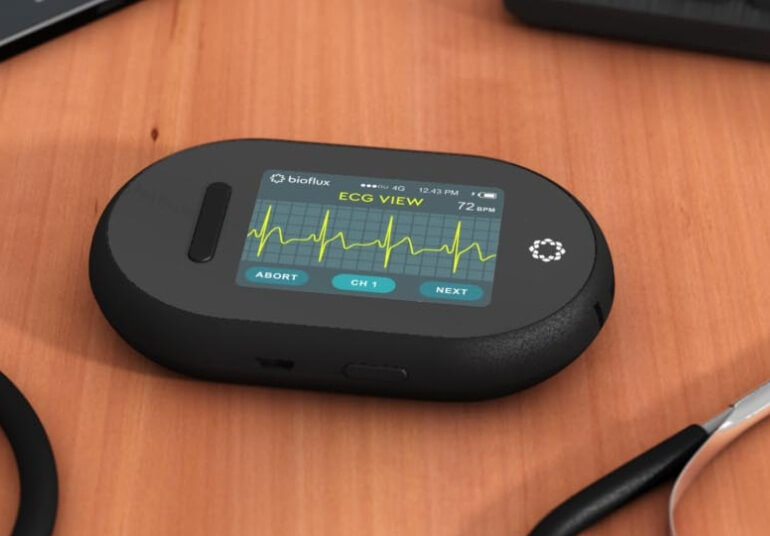Heart failure, which has a high chance of resulting in the death of a patient, is never an isolated occurrence. It is almost always caused by plenty of other underlying illnesses and factors that contribute to its occurrence. There are arguably many types of these conditions, and they are often also cardiac in nature.
In this post, we will highlight one that is not necessarily an illness but is more or less directly connected to plenty of heart failure incidents among patients. It’s called the ejection fraction. Essentially, it is a parameter or measurement that serves as a good gauge of a patient’s heart condition. Such is its reliability that most cardiologists actually rely on it to determine how efficient heart function is and even predict whether the patient is at high risk of heart failure.

Defining Ejection Fraction
How much blood is pumped by the heart per contraction is different in every individual. This is why it’s necessary to have a dedicated parameter for this important aspect of cardiac function. In essence, ejection fraction refers to the amount of blood that is ejected from the heart’s chamber every time a heartbeat occurs.
As you are probably already aware, the heart has numerous chambers, namely the atria, ventricles, veins, etc. This is why ejection fraction can refer to any one of those chambers that eject blood, although in most cases, the left ventricle is the primary focus because it is often the one that is associated with systolic heart failure. However, do take note that this not the only type of heart failure that arises from ejection fraction.
The measurement provides a much a more detailed view of the strength of the heart (particularly when pumping the blood that is much-needed by your body’s vital organs) and, therefore, reveal much about its overall condition.
What is Considered a “Healthy” Ejection Fraction?
You would normally want your heart’s ejection fraction between 50 — 70%. A healthy heart is often considered as having a 60% ejection fraction. Take note that even if your ejection fraction is lower than the said range, you may not experience any of the usual adverse symptoms associated with a low ejection fraction.
This is especially true in cases where patients have a 30% ejection fraction but are asymptomatic. Keep in in mind that any patient with 40% or lower ejection fraction is usually considered as having a higher risk of heart failure than those who have higher EF. It’s almost always either that or cardiomyopathy. But the latter usually arises if it’s the opposite case: the ejection fraction is too high (reaching 75% or above).
Highlighting Ejection Fraction’s Connection to Heart Failure
As said above, the primary type of heart failure involved in EF is ventricular in nature. Also mentioned before is the fact that not all patients with heart failure exhibit a poor or lowered ejection fraction. An echocardiography test or those undergoing cardiac telemetry monitoring might reveal a normal ejection fraction but this doesn’t always mean that the patient does not have heart failure. This is why there are two types of ejection fraction related to heart failure, which serves to pinpoint a patient’s risk regardless of whether his ejection fraction is normal or not
Types of Ejection Fraction
- Systolic heart failure — this is also known as reduced ejection fraction and is the type of heart failure that is the direct result of a low EF. This is mainly brought about by weakened heart muscles that aren’t able to contract as they should, resulting in less blood volume with every heartbeat. This, in turn, deprives the body of vital oxygen, resulting in the usual symptoms that are characterized by cardiac patients.
- Diastolic heart failure — also known as preserved ejection fraction. It’s termed as such because this is the kind of heart failure that patients experience who have an otherwise ejection fraction that falls in the normal range. While diagnostic tools might reveal a normal EF, the patient might still be subject to heart failure because his heart’s ventricles don’t relax after contraction. That being said, patients who have this kind of ejection fraction usually have a better prognosis than those who have reduced ejection fraction.
What Causes Low Ejection Fraction?
There are plenty of factors that affect your heart’s ejection fraction. The bad news is that almost a common heart ailments, acute or chronic, have a direct effect on your EF. High blood pressure, for instance, which is arguably one of the chronic heart conditions on the rise today has a direct influence on ejection fraction. The same can be said for more major heart diseases like aortic stenosis, cardiomyopathy, and heart diseases. Almost any patient with a cardiac event in the past should have their ejection fraction closely monitored due solely to this reason.
Using the Proper Tools and Raising Your Ejection Fraction Score
If you are a patient with a high risk of heart failure, a long term holter monitor may be prescribed by your cardiologist to track any kind of changes in your heart’s ejection fraction. Close monitoring proves to be effective in mitigating any adverse event that might happen in the future. You can also discuss with your healthcare provider the exact ways for you to raise a low ejection fraction.
What’s equally better is the fact that you can also directly improve a low ejection fraction by introducing appropriate lifestyle changes. For one, regular physical activity, even for cardiac patients, is still a must. Consistent cardio is actually often a part of heart failure management programs. Aiming for 20 to 30 minutes of cardio exercises would be enough to bring forth the said improvements. It would also be wise to cut back on sodium if your risk is due to high blood pressure. Lastly, keeping stress at bay is also encouraged.






